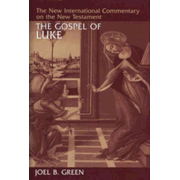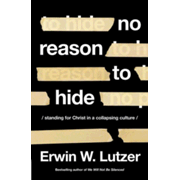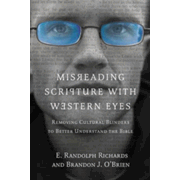FOR THE Eighteenth Sunday after Pentecost, our gospel
comes to us once again from the pages of blessed Saint Luke. Here we read both of
healing and proper thankfulness expressed…
On the way to Jerusalem he (Jesus) was
passing along between Samaria
and Galilee. And as he entered a village, he
was met by ten lepers, who stood at a distance and lifted up their voices and
said, "Jesus, Master, have mercy on us."
When he saw them he said to them, "Go and
show yourselves to the priests." And as they went they were cleansed.
Then one of them, when he saw that he was
healed, turned back, praising God with a loud voice; and he fell on his face at
Jesus' feet, giving him thanks. Now he was a Samaritan.
Then said Jesus, "Were not ten cleansed?
Where are the nine? Was no one found to
return and give praise to God except this foreigner?"
And he said to him, "Rise and go your
way; your faith has made you well."
(Luke 17:11-19)
 |
Dear and Glorious Physician By Taylor Caldwell |
Universally
Available!
For the second time in Luke’s discourse, the beloved
physician held up the example of the horrid and disfiguring illness of leprosy before
his churches. Our writer related that on his way to Jerusalem and his own
crucifixion, Jesus walked on the border between Samaria and Galilee…
ideologically balanced on the regions of the acceptable and unacceptable… on
territory between those considered clean and unclean.
As Jesus traveled toward
taking stripes of the Roman whip for our healing in Jerusalem, he encountered
ten lepers. These afflicted persons, according to mandate… were not allowed entry into the
city. Lepers could only remain outside the city, in the villages. There they had to
maintain their personal distances from the general populace.
Being so afflicted
with a dreaded disease, the lepers had long received traditional,
behavioral admonitions. The rules were made in order to protect those who
were deemed healthy, pure and unaffected. The priests in Israel, however, used
them in a discriminatory fashion.
"The leper who
has the disease shall wear torn clothes and let the hair of his head hang
loose, and he shall cover his upper lip and cry, 'Unclean, unclean.' He shall remain unclean as long as he has the
disease; he is unclean; he shall dwell alone in a habitation outside the camp.”
(Leviticus 13:45-46)
Often the populations
of these ancient times considered those who were afflicted with leprosy as
persons who received rightful punishment for their sins and the sins of others.
We read, however, that the group Jesus encountered on the road that day did not
declare the demanded, traditional and accepted warnings. Instead they expressed faith in
our Lord by asking Jesus for mercy. In saying “Have mercy upon us…” they all showed
faith that they believed Jesus could help them.
Jesus, not just
as the Son of God… but more so as a human, rabbinical teacher of the Law, did not
provide immediate healing. Here he at first treated them as indeed untouchable, but made clean. Jesus administered
guidance to them in accordance with the norms of the day. Our Lord simply told
them to go show themselves to the priest. The priest could then declare them as clean.
 |
Gospel of Luke: New International Commentary on the New Testament By Joel B. Green |
While they were yet
trapped in rotting flesh, in faith and obedience to his instructions, they all went. According to
this Lukan account, however, the healing occurred for them on their way… while still infected in
their walk of faith. This is very telling and significant for us.
You see, the healings accomplished here
unfolded differently than some of those on other occasions biblically reported… such as that
told in Matthew 8:2. Here there was an action of faith required of the
affected persons. They were asked to assume that they were healed... and walk in that
assumption. Indeed they were sent to the priest for confirmation of their
healing. The final edict, you see, was the responsibility of the priestly caste.
They needed to determine the presence or absence of the illness, as directed in
scripture.
"When a man has
on the skin of his body a swelling or an eruption or a spot, and it turns into
a leprous disease on the skin of his body, then he shall be brought to Aaron
the priest or to one of his sons the priests,” (Leviticus 13:2)
Consequently we read that
the respondents traveled as Jesus bid them. Each walked with faith in response
to the sending. In this we note that Jesus did neither a physical anointing…
nor medicinal touching. Yet healing indeed took place in each. Jesus had accomplished
such restoration strictly on the power of his Word.
 |
No Reason to Hide: Standing for Christ in a Collapsing Culture By Erwin W. Lutzer |
We know that according
to Jewish tradition, as the priest examined any having leprosy… when they were healed
the lepers were each asked to offer a living bird and the blood of dead bird in
thanksgiving. Symbolically then, the blood of the offering was poured over the
living flesh… consecrating the healing. Next the healed persons were bid to bathe,
shave all hair, and wash their clothes. Each motion was likely part of a Jewish
purification ritual that had further disinfecting effects.
Once the person was ready
to continue the cleansing ritual, two male lambs and one ewe without blemish
were to be offered up… accompanied by a cereal offering and log of oil. All of
these were to be set at the door of the meeting tent or temple entrance. The blood
of the lambs and log of oil was used as a wave, guilt offering before God.
However, if the
healed person was of poor means, lest any be left out… a more meager thank
offering was made. One male lamb was given, and some flour mixed with oil was provided
for cereal offering. Two turtle doves or pigeons purchased in the courtyard of
the temple would also be in order. Here we note the pattern which was to come
in Jesus’ own crucifixion as the Lamb of God, and the gift of the Holy Spirit
we enjoy at baptism.
 |
Misreading Scripture with Western Eyes: Removing Cultural Blinders to Better Understand the Bible By E. Randolph Richards & Brandon J. O'Brien |
With such offerings
made according to one’s station in life, and the priestly caste receiving the
offering, the healed leper would be accepted back into the Jewish community
and temple culture. This was all contingent, of course, upon the leper being of
Hebrew stock and Jewish faith. Here is where we find contention and disparity.
This following of ritual was for the Israelites only. The Samaritan to whom Jesus spoke could not
participate in the affirmation and thanksgiving. This fact, for the Christian
Church and Luke’s churches, is possibly the reason that this text looms so large
for us today.
In this final
qualification, we see that his offering participation quickly became
problematic for the Samaritan. While he could receive good news of his healing,
because of religious differences… being a Samaritan… he could not fully participate.
Thus we can see that the man would most easily be moved in spirit do a complete
about face… to return to the place where he needed not the priestly mandates.
He simply returned to the Rabbi who had healed him and instructed him.
We see in scripture
that this happened precisely as described, that though all were healed only the
Samaritan gracefully was caused to return at all. Therefore, his returning to
Jesus was not cause for us to give the Samaritan great credit, but simply
evidence of God’s grace given universally, and the receiver showed an appropriate response
to that grace.
We must ask, “Was
this an admonition against the traditional, yet isolationistic Hebraic faith
expressions and an endorsement of faithful Gentile simplicity?” I consider it
as such. By his being an outsider over against the others that would hold to
their priestly traditions, God’s inclusive grace caused this solitary Samaritan
to return through spiritual guidance… to be in the right place at the right
time. The man went back to find Jesus, and finding him… gave Jesus appropriate thanks.
This pattern effectively removed the priesthood functions from the Hebrews, and
gave all honor to our Lord, the one who was to become our great High Priest.
All persons healed
that day did have faith, but a difference in faith was shown as prominent. The difference
was in what they were having faith, and what each did about it. Was it belief
in priestly tradition.., or was faith in Christ the differing factor? Apparently
nine persons clung properly to their Levitical traditions and only one healed outsider
returned. We may wonder, "Was this a subtle message of acceptance to Gentile worshippers in the
early Church?" I believe so.
There is great and
ample scriptural proof of Jesus’ healing response to human faith. We
find this in Mark 5:23, Matthew 9:22, and Luke 8:48. However, according to the
scriptures here the Samaritan was doubly rejected and repulsive in Hebrew
society, because he was not of Israel and previously leprous as well. He
could not perform the customary and traditional Hebrew religiosities. Therefore
excluded in several ways, he gracefully and faithfully turned to the Son of God
as the source of his healing. The symbolic salvation and healing of the man was
not then a statement of the man’s character, but a profound new sign of God’s
grace through Christ Jesus, our Lord.
 |
The Complete Gospel Parallels By Arthur J. Dewey & Robert J. Miller |
Dispersed Acclamation!
This message of faith given for Luke’s churches provides we today with
clear meaning. It was the Lukan communities that walked gracefully along the
new sociological line, much like the Samaritan, caught between traditional Hebraic religious
expressions and following that walk which was not acceptable in Judaism. While any
sinful Gentile and Jew in the Lukan community surely could receive healing, it
was by grace that all followers of Christ were caused to receive healing and return
to God regardless of heritage. All properly turned… we hear thusly repented… gave thanks to
his Son.
You see, in our poverty
of spirit, the Lamb of God is shown as both the sacrifice and a new, perfect,
priestly mediator. If we today fail in returning to give proper thanks for this
healing and grace because of human traditions or medical procedures, we may also
find that we suffer from a proper lack of gratitude. We are inflicted with a sort
of spiritual leprosy. Secondly, by ignoring God’s gift to all we may find that
we treat those beyond our faith communities as outsiders. We resist their
incorporation into traditional church observances. We may even claim that they do
not conform to the ethnic heritages of our particular denomination. We may
smugly note that they do not even know a proper gelatin dessert recipe. Indeed,
we may ostracize these strangers as illegal immigrants in the faith… in our
denomination, and in our particular congregation. We may deem them as beyond healing
affirmation.
To the Church today, therefore,
I say read scripture very carefully and take warning.
“And will not God
vindicate his elect, who cry to him day and night? Will he delay long over
them? I tell you, he will vindicate them speedily. Nevertheless, when the Son
of man comes, will he find faith on earth?" (Luke 18:7-8)
The graceful record of
scripture surely reveals here that we as outsiders received healing faith through
baptism… and this graceful gift was given only by the Father, Son and Holy
Spirit. It is good and proper for us, therefore, to pass knowledge of the gift
along to others who are the outcast of the world. We the baptized are supposed to
“return to the Lord our God, who is merciful, slow to anger and abounding is
steadfast love.”
As instructed we should
though unclean in sin… go to Church to be healed ourselves, and to bow the knee
in thanksgiving. We need to return to worship the Holy One! It is Christ Jesus
indeed who has already received many stripes of the whip for our healing… and suffered
death on the cross to redeem us. Therefore in the Spirit, bowing before the
High Priest appointed, we should all be caused to give thanks to God, and invited others to do the same. So it is…
and so it shall be.
Please be invited to watch this video based upon the lesson above...
May The Peace of God Be With You Always!


No comments:
Post a Comment